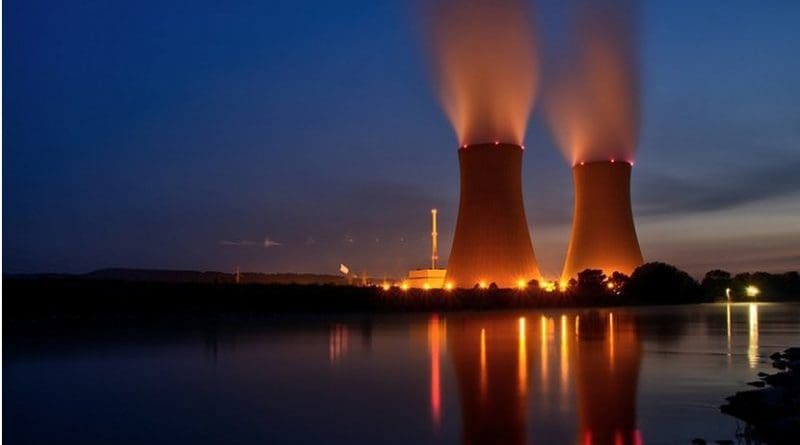Facing A New, Old Nuclear Threat: The Case Of Metsamor – OpEd
Leaders from 51 countries gathered on March 27, 2012, for the Seoul Nuclear Security Summit. Participants in the summit focused their concerns on efforts by North Korea and Iran to develop atomic programs. Such nuclear ambitions should invoke a global response as a nuclear war could obliterate entire populations.
But world leaders also need to pay attention to existing nuclear entities that also pose a potential threat. One such topic for concern is the Metsamor nuclear plant in Armenia. Located 30 kilometers west of Yerevan, the 35-year-old nuclear plant has aroused the concern of experts. Based in an earthquake zone and rife with antiquated equipment and other problems, Metsamor already undermines well-being of entire nations on a daily basis.
Unexpected fatal surprises like the Chernobyl (1986) and Fukushima (2011) accidents caused problems not only for their host countries but also for their entire respective regions. Chernobyl affected not only Ukraine but all of Europe from East to West. Western European countries like Finland, Sweden, and Germany did not escape Chernobyl’s cruel side effects. In 2007 the Finnish government stated that even after 21 years fish and mushrooms in some regions of Finland are still toxic as a result of radiation.
Are the South Caucasus region and surrounding areas facing their own Chernobyl or Fukushima?
A European Union report, labels Metsamor’s reactors (VVER 440 Model V230 light water-cooled reactors) “the oldest and least reliable” among 66 reactors built in Eastern Europe and the Soviet Union. An April 11, 2011, National Geographic story, “Is Armenia’s Nuclear Plant is the World Most Dangerous?” focused on the plant’s location. In December 1988 some 25,000 Armenians died in a massive earthquake.
Regional Responses
The Armenian officials have argued that the International Atomic Energy Agency supports the plant remaining in operation. This group bases its argument on input from The Hungarian head of the 11-member IAEA Operational Safety Review Team for Armenia, Gabor Vamos. He told reporters: “There is no industrial activity that does not pose any risk, but I think the results of our inspection show that this risk at Metsamor is acceptable.” Director of the Greens Union of Armenia Hakob Sanasarian called Vamos’ statement biased and stated that “the nuclear power plant is dangerous in terms of environment, seismic, and safety risks.”
Neighboring countries have already demonstrated their concern. The Head of the Administration of the Ministry of Industry and Energy of Azerbaijan Rasim Mammadov told journalists in 2011: “Metsamor nuclear plant is in poor condition, and there are no prospects for future activities.” He also stated that Metsamor imposes threat to the whole region.
Also in 2011, Turkey’s Energy and Natural Resources Minister Taner Yildiz addressed the importance of closing the aging nuclear plant in Armenia. He said that the Turkish government is against all plants that effective life is expired.
Georgian physicist Mikhail Kaviladze indicated that the risk of failure of the plan was high because of its mountainous location, which offered limited water supply in the event of needed emergency cooling of the reactor.
In the course of the 2012 Seoul Nuclear Security Summit, Azerbaijani President Ilham Aliyev brought Metsamor concerns to the attention of international community again by stating that “Metsamor does not meet modern standards and is located in a seismic zone.” Armenian President Serj Sargisian has referred to Azerbaijani claims about Metsamor’s potential dangers as “[typical] disinformation.”
International Community Response Needed
The world community needs to hold Armenian officials responsible for the consequences of a possible nuclear accident because of its possible disastrous impact on the entire broader region.
The United States and the European Union have already pushed the Armenian government to close the plant and to find alternative sources for Armenia’s electricity demands. The EU addressed the importance of closing this plant after its envoy called the plant as a danger to the entire region. In 2006, while visiting Yerevan head of an EU delegation, Austrian Foreign Minister Hans Winkler said that “the Armenian nuclear power plant uses old technologies, which do not come up to modern security standards.”
Armenia has rejected an EU offer of a 200-million-euro loan to shut down the plant. Armenia has resisted requests to shut down Metsamor, citing the lack of effective alternatives for the nation’s electricity supply. The plant provides 40 percent of Armenia’s electricity.
If Armenia continues to ignore the concerns of its neighbors and of the international community for its interestthen the United States and EU should be prepared to impose sanctions, including the cutting of humanitarian aid. European countries should be prepared to protest Armenia’s insistence on keeping Metsamor open notwithstanding the threat it poses to the larger region.
Seoul summit participants will do well to consider Azerbaijani President’s reminder of threat posed by Armenia’s Metsamor nuclear plant.

